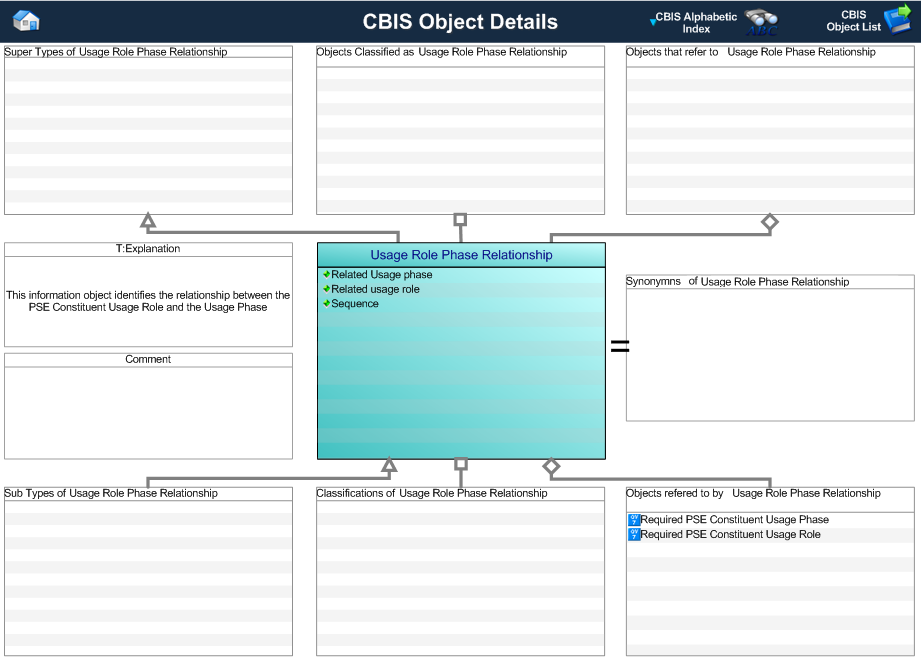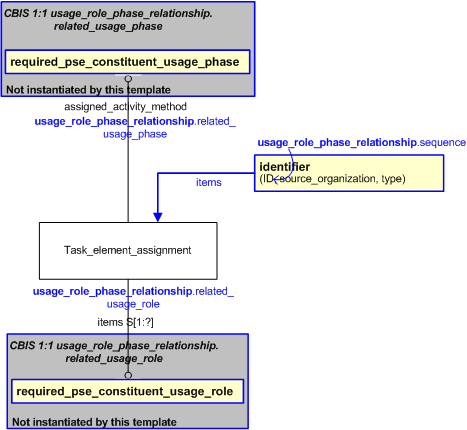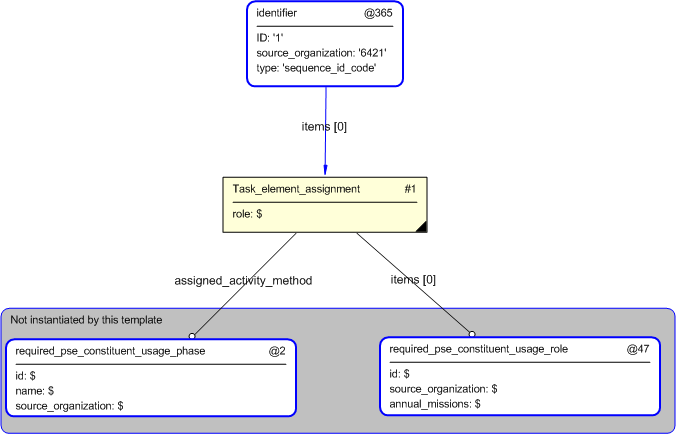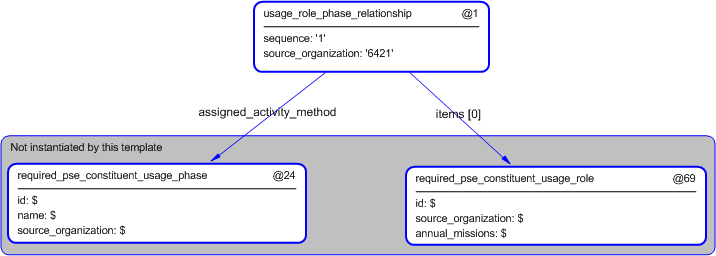Template:— usage_role_phase_relationship (usr_phrl)
Context:— UK_Defence |
Date: 2009/04/17 12:35:49
Revision: 1.5
|
This section specifies the template usage_role_phase_relationship.
NOTE
The template has been defined in the context of
UK_Defence.
Refer to the business context for details of related templates.
NOTE
An explanation of a template and the associated instantiation path is
provided in the
Template overview
section.
This template describes how to represent the relationship between the PSE Constituent Usage Role and the Usage.
Figure 1 — Graphical Representation for Business Object usage_role_phase_relationship
usage_role_phase_relationship
The definition of a usage_role_phase_relationship object is:
This information object represents information about an actual usage_role_phase_relationship of an individual product.
|
Attribute name
|
Attribute description
|
Attribute type
|
Optionality
|
| Related usage phase |
This is a reference to the related Usage phase. |
Relationship to Required PSE Constituent Usage Phase |
Mandatory |
| Related usage role |
This is a reference to the Usage role. |
Relationship to Required PSE Constituent Usage Role |
Mandatory |
| Sequence |
This attribute specifies the position of the Usage phase in the sequence of Usage phases. |
intrinsic |
Mandatory |
Table 1 — usage_role_phase_relationship attribute details
The EXPRESS-G diagram in
Figure
2
shows the templates and EXPRESS entities that are required
to represent the template
"usage_role_phase_relationship".
The text highlighted in blue shows the template parameters.
Figure 2 — An EXPRESS-G representation of the Information model for usage_role_phase_relationship
The graphic for the template to be used in other EXPRESS-G diagrams
is shown in Figure
3
below.
Figure 3 — The graphical representation of the usage_role_phase_relationship template
The following input parameters are defined for this template:
This is a reference to the related Usage phase.
This is a reference to the Usage role.
This is the sequence number of the relationship.
An Organization representing the sequence of the relationship.
The following reference parameters are defined for this template:
%^target = $usage_role_phase_relationship.usage_role_phase_relationship%
The instantiation path shown below specifies the entities that are to be
instantiated by the template.
A description of templates and the syntax for the instantiation path is
provided in the
Templates Help/Information section.
The following entities are instantiated with attributes as specified:
The instance diagram in Figure
4
shows an example of the EXPRESS entities and templates that are instantiated by the template:
/usage_role_phase_relationship(related_usage_phase='#2', related_usage_role='#47', sequence='1', source_organization='6421')/
(an illustration of the consolidated usage_role_phase_relationship template is shown in
Figure
5 below.)
Figure 4 — Entities instantiated by usage_role_phase_relationship template
The instance diagram in
Figure
5
shows the graphic symbol for the template that is to be
used in other instance diagrams. The example template is:
/usage_role_phase_relationship(related_usage_phase='#2', related_usage_role='#47', sequence='1', source_organization='6421')/
Figure 5 — Instantiation of usage_role_phase_relationship template
Characterizations
No common characterizations of the template
usage_role_phase_relationship
have been identified. However, the ISO 10303-239 EXPRESS model
may enable other assignments to the entities instantiated by the template.




